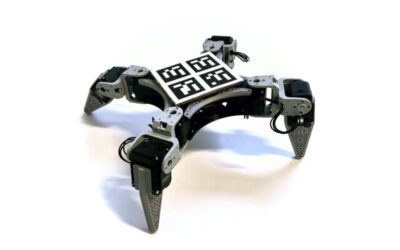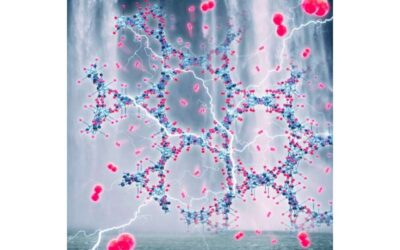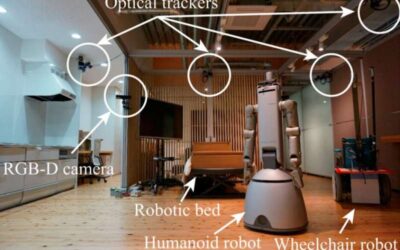Deep learning algorithms have proved to be promising tools to tackle a variety of real-world problems, especially those that require the analysis of vast amounts of data. In contrast with other computational techniques, in fact, these algorithms can learn to make...
TECHXPLORE
RealAnt: A low-cost quadruped robot that can learn via reinforcement learning
RealAnt: an open-source low-cost quadruped robot for real-world reinforcement learning research. Credit: Ote Robotics Ltd, CC BY 4.0 license. Over the past decade or so, roboticists and computer scientists have tried to use reinforcement learning (RL) approaches to...
RealitySketch: An AR interface to create responsive sketches
Researchers at University of Calgary, Adobe Research and University of Colorado Boulder have recently created an augmented reality (AR) interface that can be used to produce responsive sketches, graphics and visualizations. Their work, initially pre-published on...
A strategy to transform the structure of metal-organic framework electrocatalysts
The oxygen evolution reaction (OER) is a chemical process that leads to the generation of molecular oxygen. This reaction is of key importance for the development of clean energy technologies, including water electrolyzers, regenerative fuel cells and rechargeable...
Exploring the use of artificial intelligence in architecture
Over the past few decades, artificial intelligence (AI) tools have been used to analyze data or complete basic tasks in an increasing number of fields, ranging from computer science to manufacturing, medicine, physics, biology and even artistic disciplines....
Nanoscale Schottky diodes fabricated via adhesion lithography
To fabricate nanoscale photonic and electronic devices, engineers need electrodes made of asymmetric metals separated by gaps in the nanometer (nm) length scale. So far, most of these electrodes were fabricated using high-end patterning techniques, such as...
A pocket cooling device based on a cascade mechanism
Recent technological advances have enabled the development of increasingly compact and flexible devices. This includes wearable or portable technology, such as smart watches, earphones or other smart accessories, which can assist human users in a variety of ways.
Previewed Reality: A system that allows users to predict future changes in their environment
When robots and humans interact in a shared environment, it is important for them to move in ways that prevent collisions or accidents. To reduce the risk of collisions, roboticists have developed numerous of techniques that monitor an environment, predict the future...
Efficient light-emitting diodes made by depositing perovskites on a fluoride interface
Light-emitting diodes (LEDs) are devices that emit light when electrical current flows through them, traditionally fabricated using semiconducting materials. Over the past few years, scientists and electronics engineers have been exploring the potential of LEDs made...
A technique to over-dope graphene beyond the van Hove singularity
For over a decade, theoretical physicists have predicted that the van Hove singularity of graphene could be associated with different exotic phases of matter, the most notable of which is chiral superconductivity.










